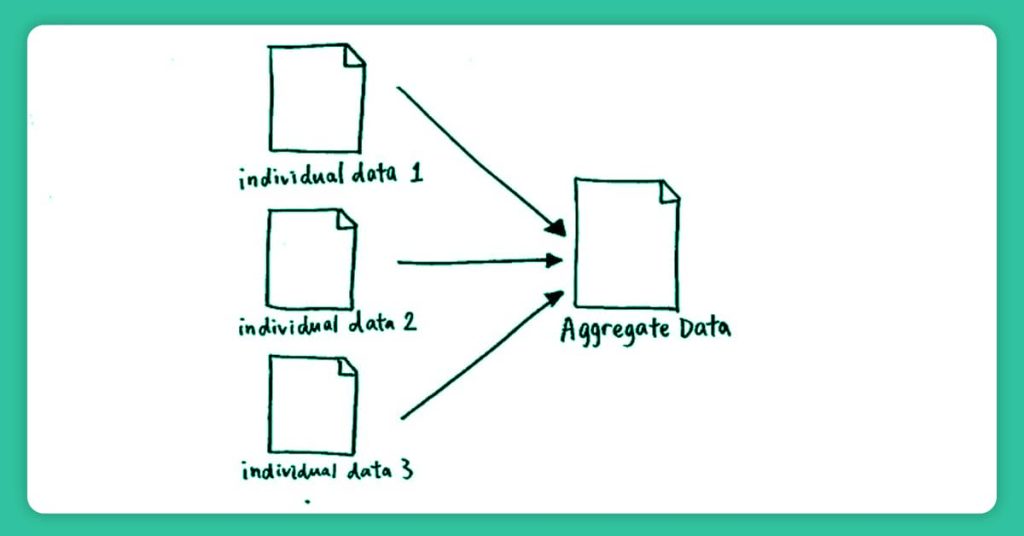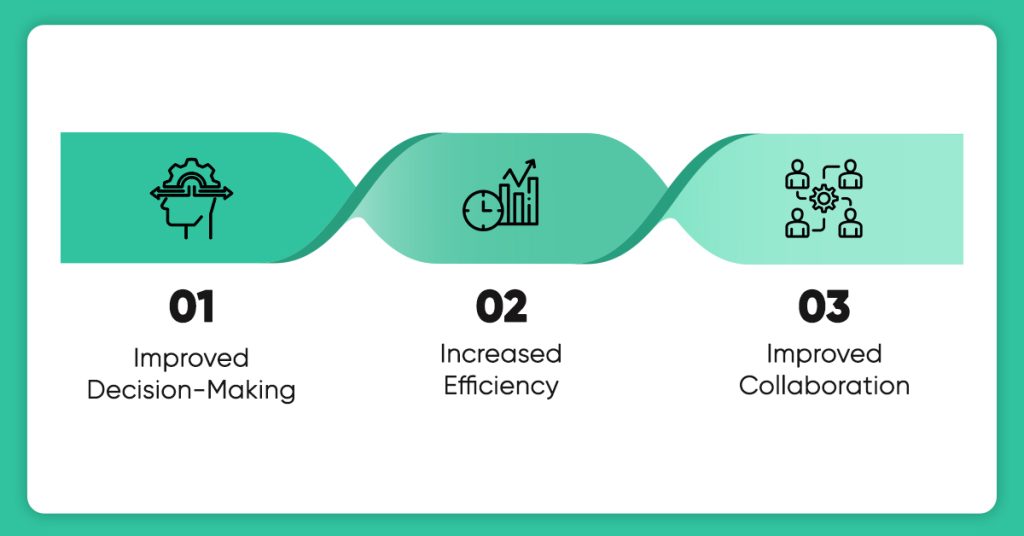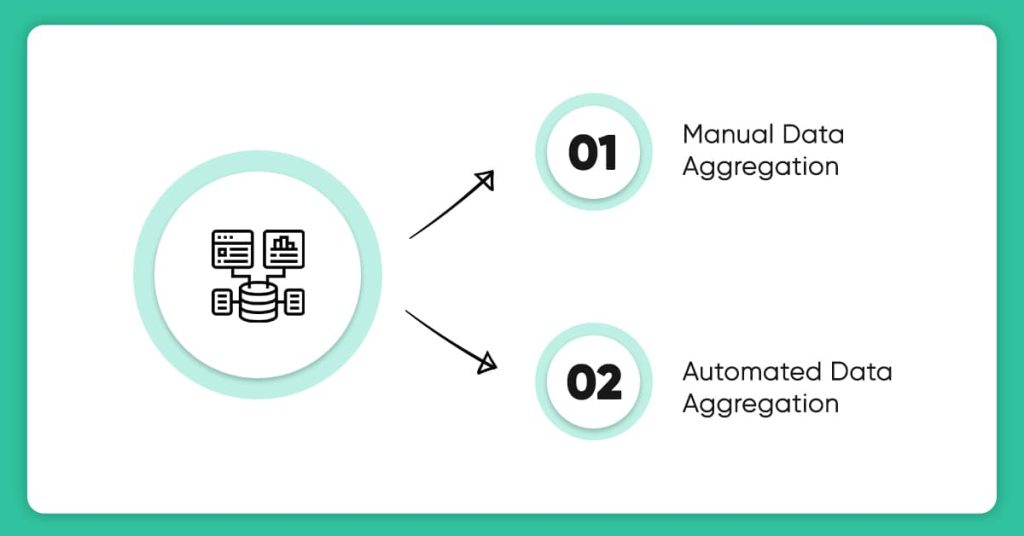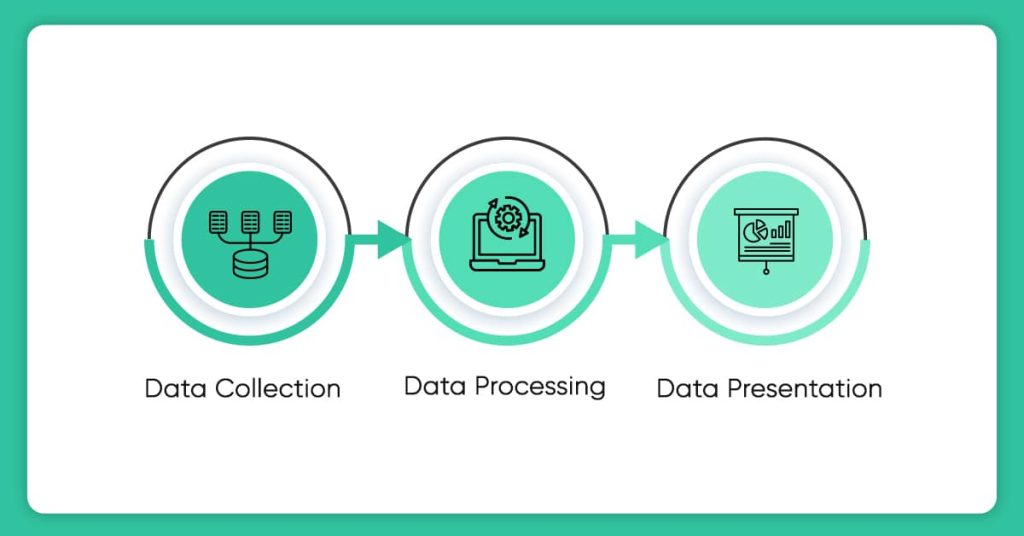Data Aggregation: How It Helps E-Commerce Businesses
Data aggregation helps e-commerce businesses to filter data and measure their performance. In this article, you will learn how to use it to boost your e-commerce business.
- March 23, 2023
Our achievements in the field of business digital transformation.









According to a survey conducted by Forrester Research, 83% of consumers say they are more likely to buy from brands that provide them with personalized offers and promotions. The study also revealed that 71% of customers are willing to share their email addresses with retailers if they receive personalized emails.
Data aggregation helps you understand which products your customers like most and which they do not like. It also helps you better identify your target audience to make better marketing strategies for your business.
This article will teach you how data aggregators can boost your eCommerce Business Intelligence. But before that, let’s find out what data aggregation is.
What Is Data Aggregation?

The goal of data collection is to create a comprehensive database that can be used for analysis. It is the process of collecting and analyzing data from multiple sources. This can be done using various methods, including manual data entry and scraping websites for information.
It helps businesses make more informed decisions by giving them a complete picture of their customer’s behaviors and preferences. It also helps businesses identify new opportunities for growth and expansion.
Why Is Data Aggregation Important for Business?

In an age where we have access to more data than ever before, we must be able to use this information effectively. Data aggregation is essential because it allows businesses to analyze multiple data sources in one place. This can be used for a variety of purposes, including:
- Improved Decision-Making: By aggregating your data, you can make better decisions about how to run your business. This is because you can access more information to draw conclusions and predict future trends.
- Increased Efficiency: Having all your data in one place means you can spend less time searching for it and more time using it. This will help improve the efficiency of your business process overall.
- Improved Collaboration: Access to your data means that everyone in your organization can work together more efficiently on projects and other tasks requiring teamwork. Everyone will have access to what they need at any moment, allowing them to work together more efficiently and quickly come up with solutions when a problem arises.
Types of Data Aggregation

1. Manual Data Aggregation
Manual data aggregation is one of the cumbersome ways to get data from multiple sources and combine it into one place. For example, you might use an application like Excel to pull data from several different sources and combine them into one spreadsheet. This method can be time-consuming and prone to human error.
2. Automated Data Aggregation
In this method, data aggregators automatically pull data from multiple sources and organize it in one place for analysis or storage. It allows you to collect and store data from various sources in one place. It can be done with software or apps, meaning you do not have to enter all your data into one place manually.
Instead, it is automatically gathered by software or apps. A good example would be Google Sheets, which allows you to create spreadsheets that contain all your contacts’ information (such as name, email address, and phone number). You can then use this spreadsheet as a central hub where all your contacts’ information is stored.
The Process of Data Aggregation

Data aggregation involves three main steps: collection, processing, and presentation:
1. Data Collection
This is the first step in data aggregation. Data collection involves gathering, extricating, and storing data in a central system. It is typically completed by a team of analysts working with IT and business teams to identify, collect and cleanse all of your company’s data sources.
2. Data Processing
This is the process of taking data from the source and making it ready for analysis. This involves removing unwanted records from the dataset so that only relevant results are displayed.
For example, if you were looking at sales figures for a range of products, you might filter out any products below a certain threshold so that your results only showed those that sold well.
It is usually done by identifying and removing outliers or other erroneous values from the dataset. Data cleaning can also be used to fill missing values with some estimated value if those values are unnecessary but make calculations more accurate.
3. Data Presentation
This is the last step of data aggregators. Once all the necessary data has been collected, it should be presented in a way that makes sense to your audience. This includes using graphs, charts, tables, and other visualization tools to convey your message.
Data presentation also provides context around your findings so that they are easily understood by others who may need more technical knowledge about your presentation.
How Data Aggregation Helps E-Commerce Businesses

With the growing popularity of e-commerce businesses, data collection has become one of the critical elements in helping these businesses grow. Here are the six ways data collection helps e-commerce businesses:
1. Build Trust With Customers
Data collection helps you understand your customer better. You can know your customer’s habits and preferences and how they interact with your brand. All these valuable insights help you offer personalized products relevant to their needs, which helps build trust in your targeted audience.
For example, suppose a customer buys a product in one category (such as clothing). In that case, you could offer them recommendations for related items within that category or even offer discounts on future purchases.
2. Improve Operational Efficiency
Data collection can help improve operational efficiency in several ways. For instance, it can help identify holes in your sales funnel, allowing you to change how you drive traffic or improve your digital marketing efforts. This will ensure that you get the most out of your marketing budget and that your website performs at its best.
It will also allow you to identify problem areas within your customer services department. For example, if particular issues on your website cause customers to abandon their carts — so that you can take corrective action before they become problems.
3. Stay On Top of Industry Trends
Industry trends constantly change, so you must be cautious about new products and services. Suppose you are not staying on top of industry trends through aggregated data from multiple sources. In that case, you could lose your competitive advantage of being late to the party or failing to capitalize on growth opportunities.
Also, aggregated data helps you do just that by showing you what your competitors are doing and how they are doing it. You can also use this information to adjust your strategy so that you do not waste time or money on marketing campaigns or products that won’t be profitable for your business.
4. Make Better Marketing Decisions
With access to aggregated data, you can make smarter marketing decisions. You can see what is working and what is not and adjust your strategy accordingly. This saves time, money, and effort from training new campaigns that do not perform well.
5. Increase Revenue and Profits
Aggregating data provides a better view of your customer base, allowing you to understand their needs better and tailor your products accordingly. This will increase revenue and profits and help you stay ahead of competitors.
The Best Way To Aggregate Data From Various Sites
There are many ways to aggregate data from various sites. The best way is to take the help of leading data scraping services. Some companies offer this service, and you can find them easily online. These companies use software called web crawlers or spiders that can access any website and collect information from it.
The main advantage of using this technique is that you do not have to spend hours searching for information from different websites. This makes getting all the data in one place and analyzing it better easier. Also, this technique lets you quickly get all the information about your business or industry without spending time on it.
Final Thoughts
In the end, data collection is truly a win-win situation. It helps aggregated site users find all the deals they want in one place. Moreover, it lets merchants streamline their advertising efforts, saving them money and helping them focus on the customers that matter most. With so many positive benefits for everyone involved, it is no surprise that it’s been so wildly successful for e-commerce websites across all sizes.














What Will We Do Next?
- Our representative will contact you within 24 hours.
- We will collect all the necessary requirements from you.
- The team of analysts and developers will prepare estimation.
- We keep confidentiality with all our clients by signing NDA.





